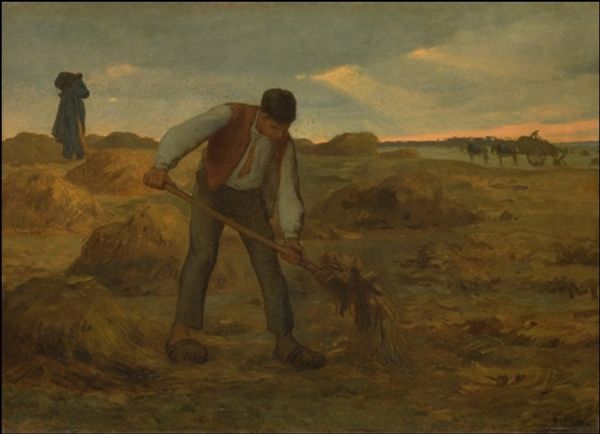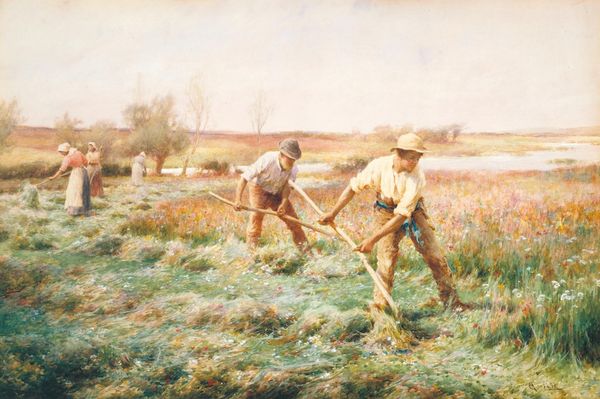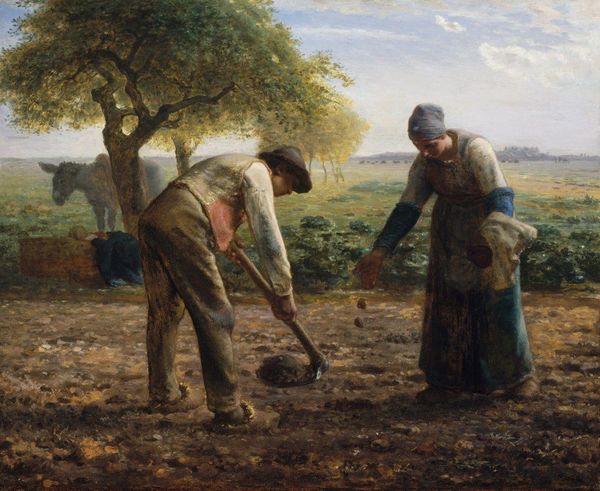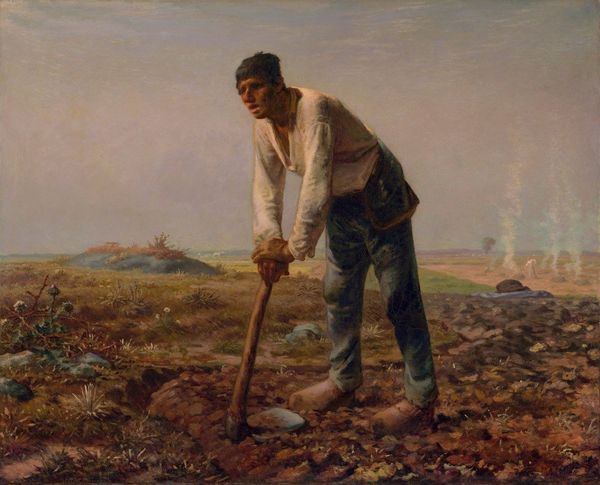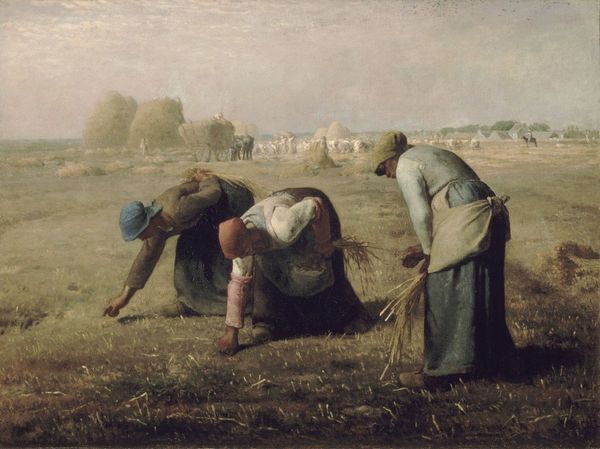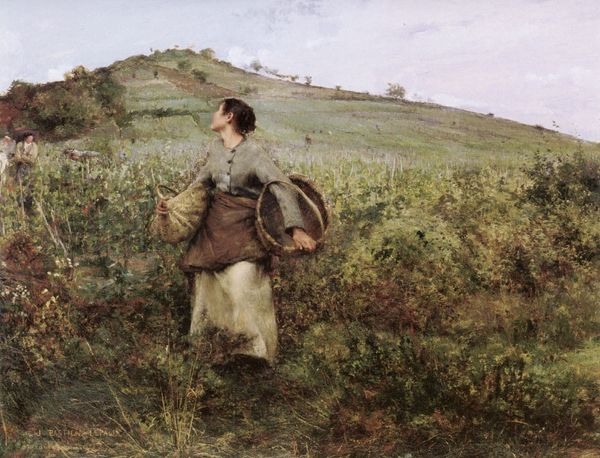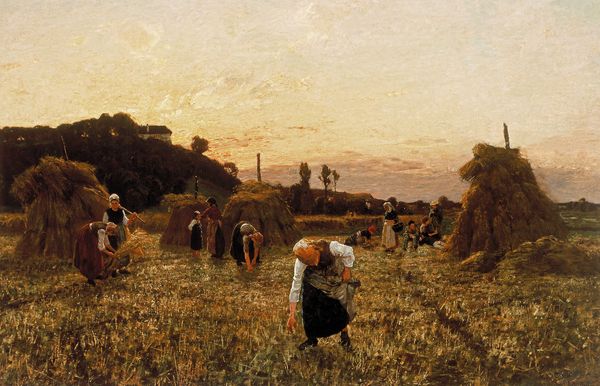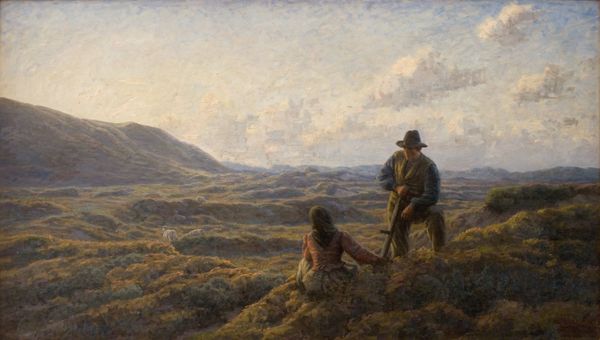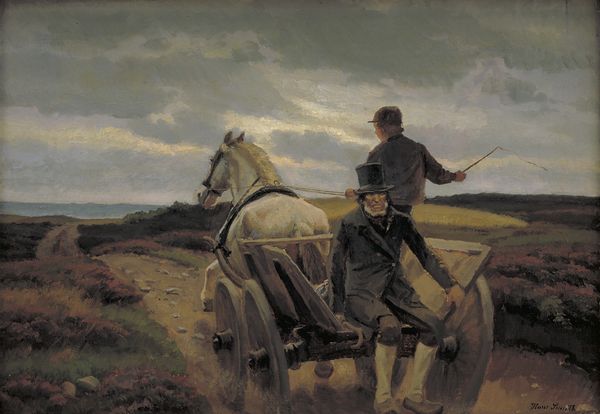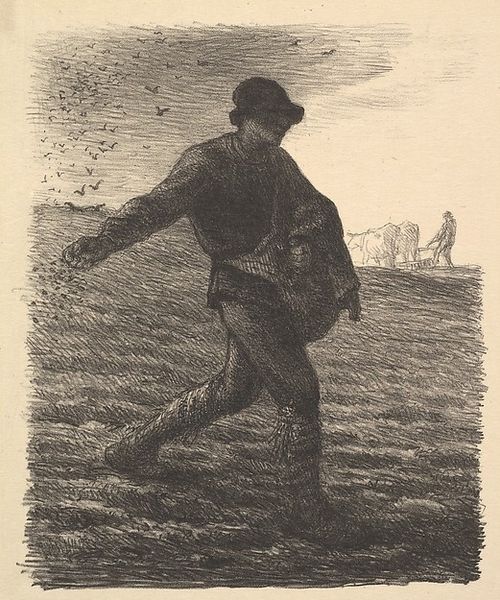
Dimensions: 43.5 x 53.5 cm
Copyright: Public domain
Curator: Welcome. Here we have Jean-François Millet’s “The Sower,” created around 1865. It’s rendered in pencil and charcoal on paper, offering a striking example of his realist style. Editor: There's such a quiet desperation to it. The color palette is subdued, almost sepia-toned, and the lone figure immediately evokes a feeling of hardship, of rural struggle. Curator: Absolutely. Millet often focused on the lives of peasants. Consider the sower’s clothing—it's worn and functional, indicative of manual labor and limited resources. And observe the field, the rough, uneven surface shows both the potential of nature but also human labor as transformation. Editor: The sower himself becomes an archetype here. The gesture of scattering seeds—it’s an ancient one, connected to fertility rituals and the cycle of life and death. Think of the countless myths where scattering seeds is an act of creation, or hope. It also symbolizes investment into a desired yield. Curator: Interesting. What I find compelling is the composition's suggestion of industrial change encroaching. The worker with a plough in the background looks so far. The flock of birds overhead emphasizes natural cycles as the landscape bears witness to both change and human imprint upon nature. Editor: Yes, they do highlight an intersection. The sower stands at the cusp of tradition meeting new technologies, that idea that his labour is part of a historical continuity, while facing a horizon filled with both promise and threat. This is amplified by those tiny, but somehow hopeful details of seed. Curator: I’m curious how you would characterize the symbolism behind those seeds. Considering that Millet produced several iterations of 'The Sower' Editor: Perhaps the seeds represent not just crops, but ideas, or even future generations. The simple act contains profound meaning and a heavy history; his commitment to showing labourers at work has shaped how we visualize agricultural practices today. Curator: It underscores how his work captured pivotal changes in 19th-century labor practices and land use in pre-industrial societies. Reflecting back, focusing on labor highlights how deeply socio-cultural concerns underpin the artist’s symbolism choices, no? Editor: Indeed, looking at the figure now it seems so heavy with these cultural layers, not simply about an act, but history and hope intertwining with each tossed seed.
Comments
No comments
Be the first to comment and join the conversation on the ultimate creative platform.
